Early Risers: Climate Change And Himalayan Brown Bear Hibernation
First published in Sanctuary Asia,
Vol. 43
No. 6,
June 2023
By Shiv Kumar and Akanksha Thakur
Chasing A Rumour
It was around mid-March this year, and the snow had melted in most regions of Lahaul in Himachal Pradesh. This was the season to spot the snow leopard, and we set out on most of our excursions with the hope of catching a glimpse of the elusive ghost of the mountains. One day our friend and avid birder Dipender Othangwa shared an intriguing rumour – a female brown bear had been spotted with two cubs on a cliff near a village in the Pattan region of Lahaul, during the late evening hours. A Himalayan brown bear sighting so early in the year piqued our attention instantly. A part of me was sceptical about this sighting, wondering if it was even true, and another part was definitely worried.
We went in search of the bear on March 18, 2023. We scanned the entire area but did not find any trace. Instead, we saw a Chukar Partridge. As we scanned the cliffs, Dipender told me that he had seen one brown bear in a similar terrain in 2022. We were observing a gap between the loose mountain borders with our binoculars and scanning the entire cliff when suddenly, Amir Jaspa, a close friend and wildlife enthusiast, spotted a female resting while her two cubs were playing besides her. This was a big surprise. However, our curiosity at seeing the brown bears was tempered with dismay, as an unseasonably early sighting of bears – which should have been hibernating still – was the result of less snowfall this winter – an impact of climate change in the Lahaul region.
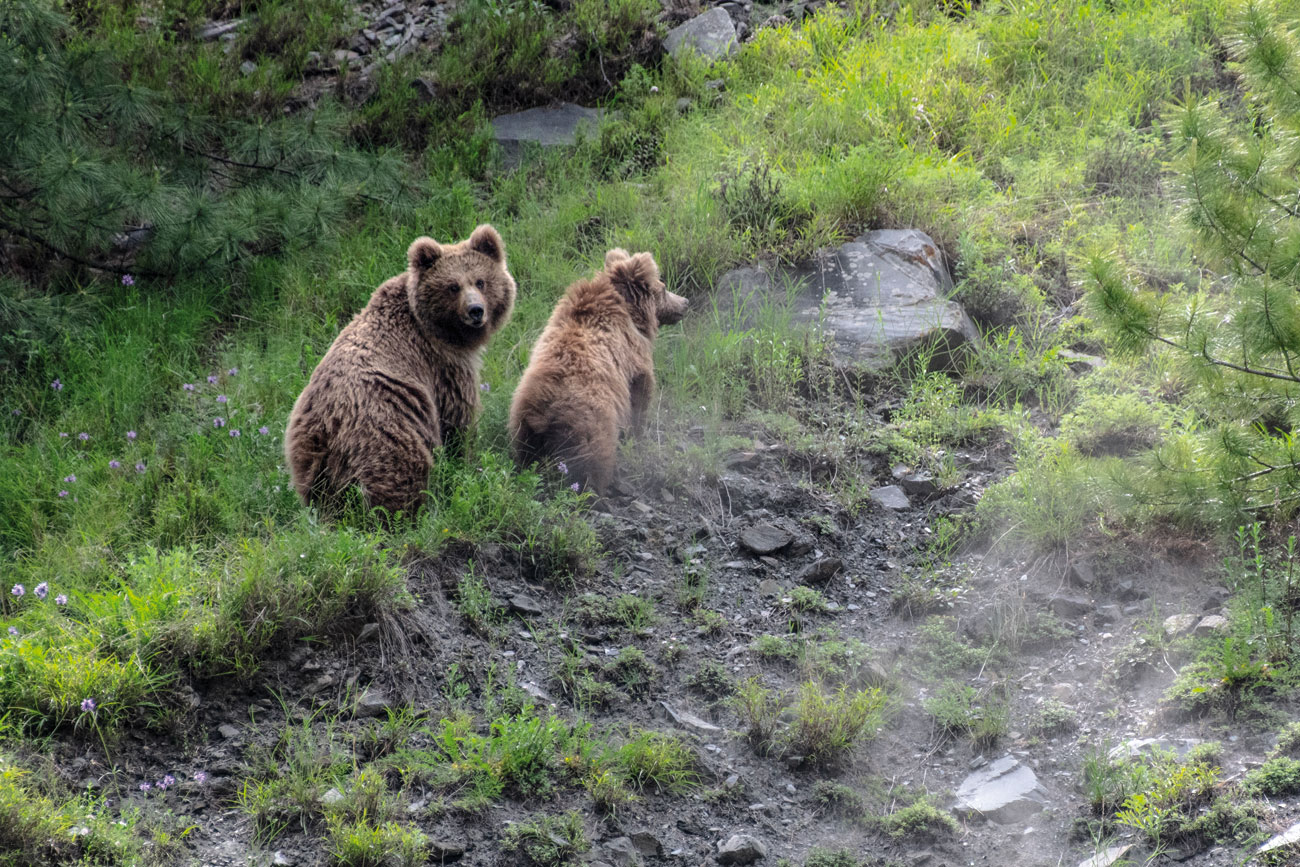
Over the years the author, who is a Forest Department official in the Lahaul Forest Division, has observed a clear change in the hibernation habits of Himalayan brown bears. This mother and cub pair had woken up unseasonably early, causing alarm and dismay rather than joy. Photo: Shiv Kumar.
Two days after this event, we decided to try our luck again. We reached the location early in the morning. That day, we first saw a large adult male, followed by a sighting of the same female with her cubs. The male that we spotted had reached quite a high altitude while crossing the cliff. On the same day, we also spotted a sub-adult brown bear.
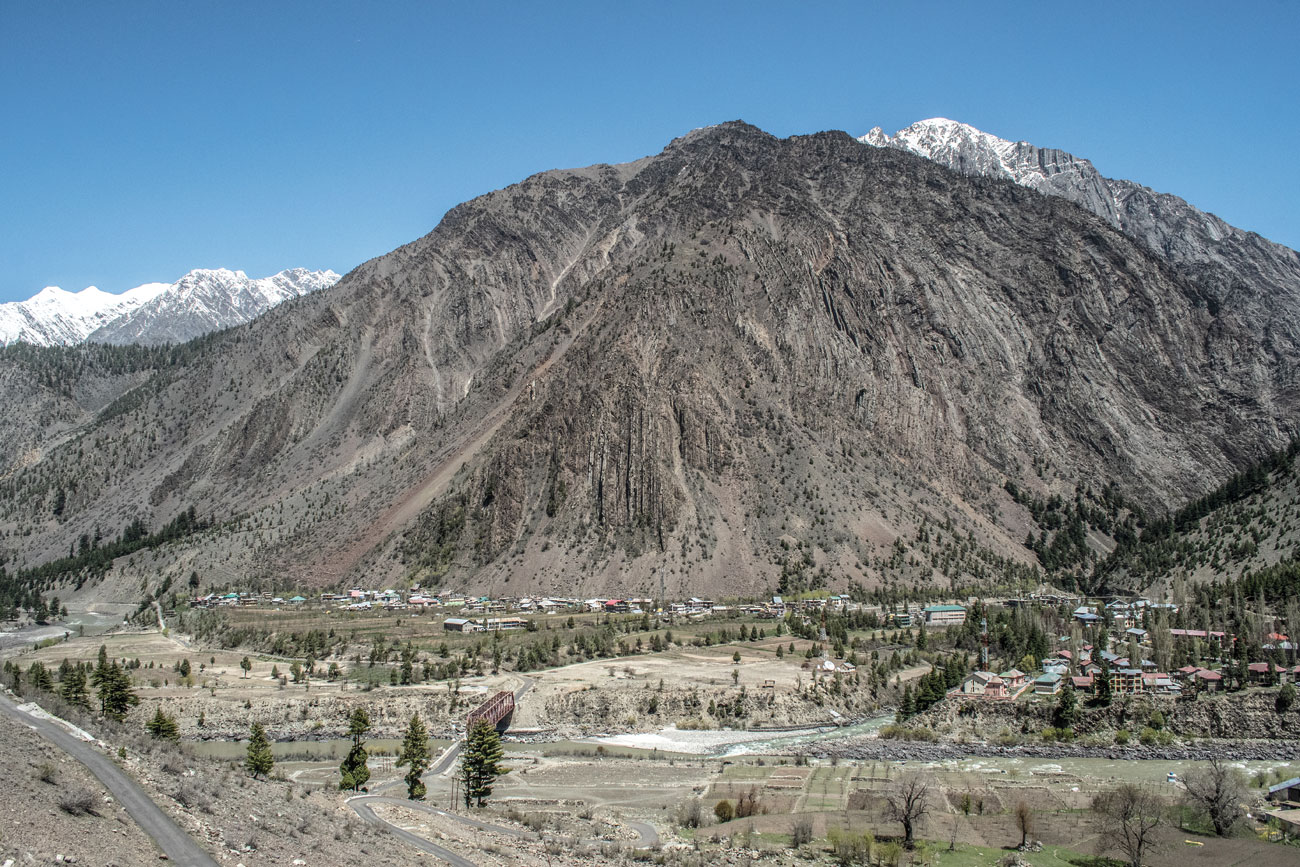
A picturesque view of Udaipur village in Lahaul, Himachal Pradesh. The region is experiencing scorching temperatures that threaten to jeopardise its traditional way of life and surrounding fragile wildlife. Photo: Shiv Kumar.
Disturbed Sleep
With warmer winters, bears are waking from their hibernations earlier and earlier, in India as well as other regions. This sighting was a whopping 20 days earlier than the previous year, which is a very large change. As a Forest Department official in the Lahaul Forest Division, I (SK) have observed the behaviour of the animals in the region closely. Over the years, there has been a clear change in how long the Himalayan brown bears stay in hibernation on account of the decrease in snowfall in the region. In recent years, brown bears have been spotted earlier than the usual trend, indicating a disruption in their hibernation cycle. I have been setting up camera traps since 2016 and observing the patterns of these species in the Himalayas. Based on my observations from the footage, these mammals would only emerge from their hibernation around the second week of April. In April last year, we experienced a drastic change in temperature. I noticed that on account of heat waves in the region, the Himalayan brown bear cubs descended to the Chenab (Chandrabhaga) river and played in the water.
We have assembled a team of local residents of Lahaul, who are committed to protecting and documenting these charismatic species of the Trans-Himalaya, including Amir, Raj Rawal (also a birder and wildlife enthusiast), and Dipender.
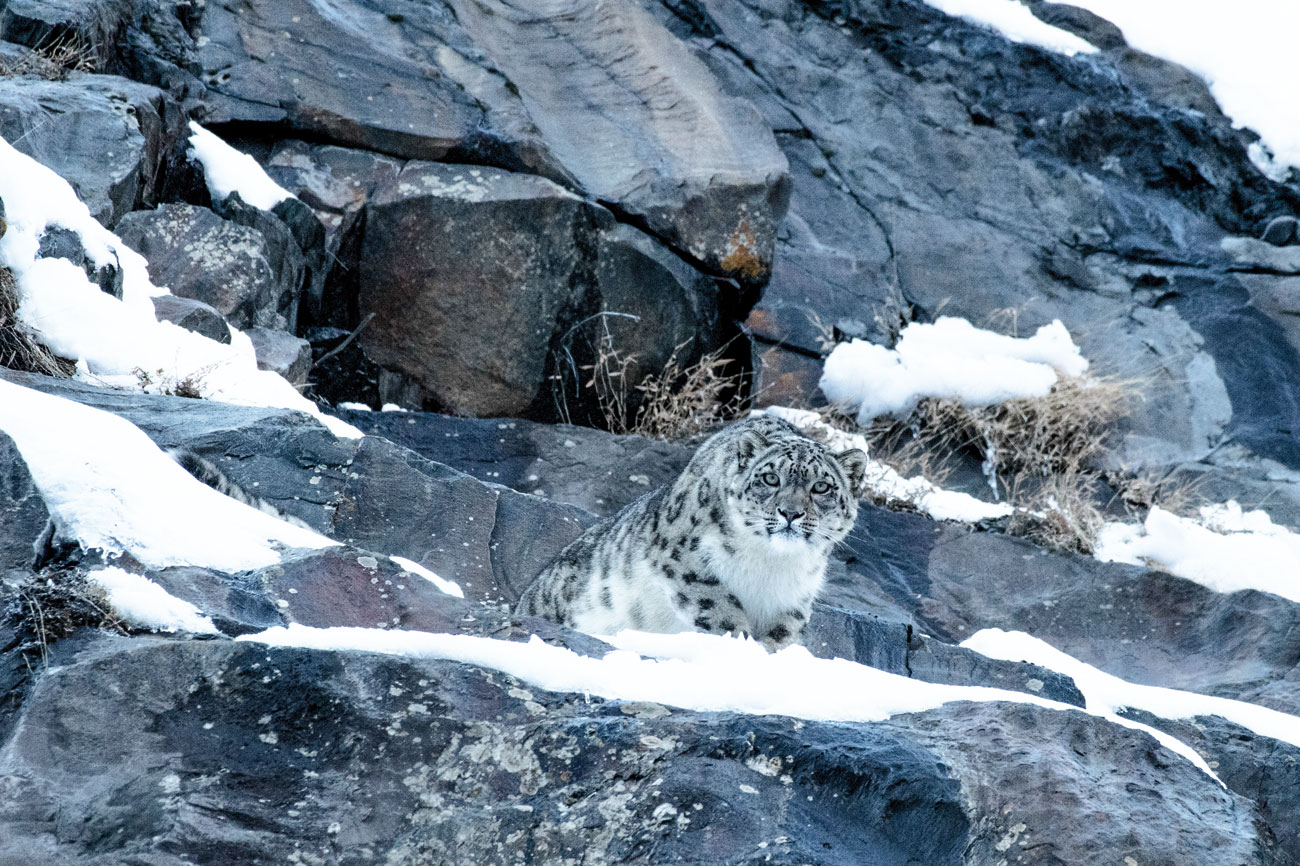
Lahaul is also known for its snow leopard sightings in the winter months. Photo: Shiv Kumar.
Himalayan brown bears are a rare and majestic sight in the Trans-Himalayan regions of India. They are known for their thick fur coats and playful personalities, and are an important part of the ecosystem in which they live. But climate change has changed these bears’ habitat substantially. This includes changes in snowfall, and occurrence of flash floods and drought. The availability of natural food sources for the bears has also declined. These changes have disrupted the hibernation cycle of the Himalayan brown bear.
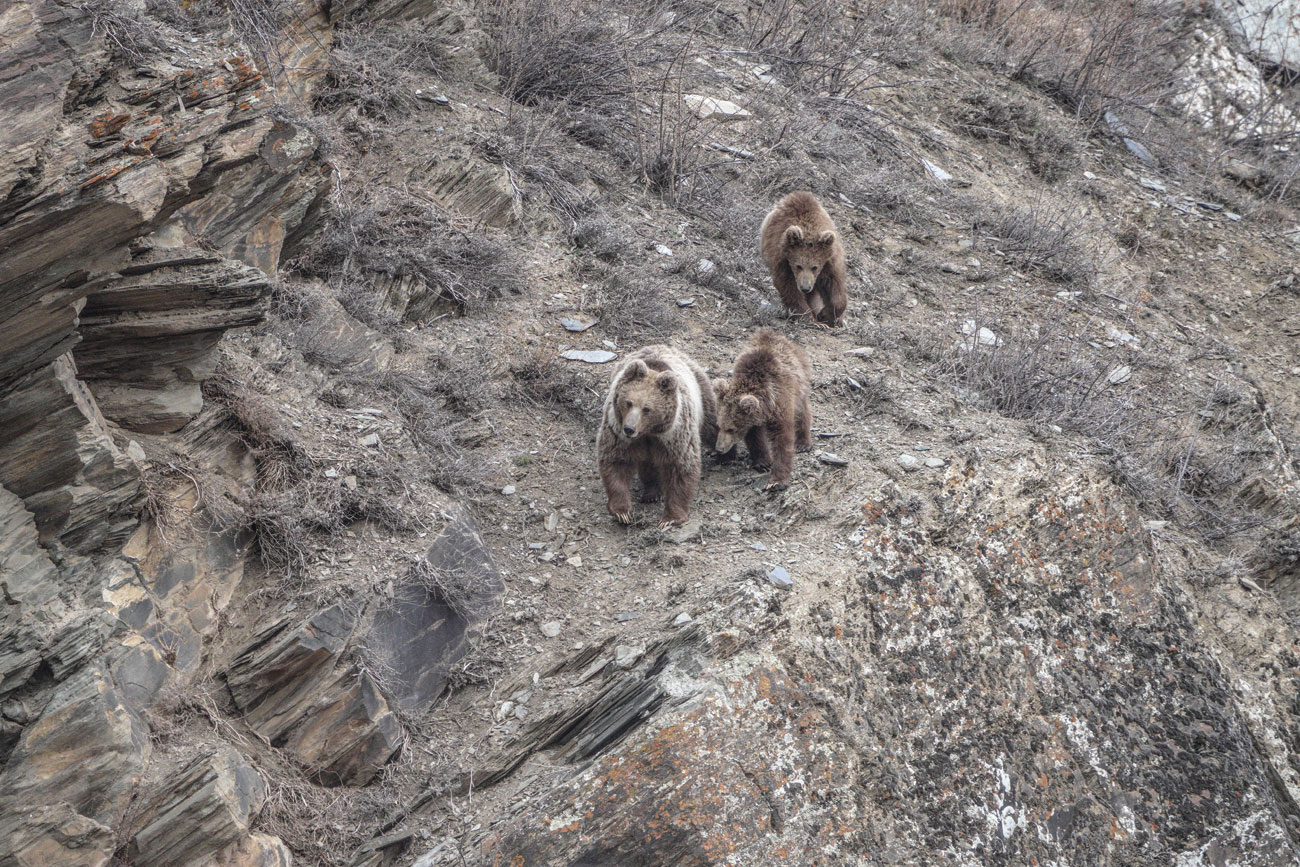
The Chandrabhaga (Chenab) is the main waterbody in Lahaul, and there are a dozen hydroelectric projects proposed in the Lahaul-Pangi area. The construction of these projects will force these large mammals to leave their natural habitat, leading to a definite increase in human-animal conflicts in the region. Photo: Shiv Kumar.
Bears And Us
Lahaul is known for its unique relationship with the Himalayan brown bear. There is a belief in the region that the hibernating brown bear turns around to change its body posture before waking up in its cave, and finally wakes up at the beginning of the cultivation season – around Baisakhi, which is celebrated in mid-April. This indicates that the bears hibernated for a longer time in the Lahaul region than they do now. Between 1940s and 1970, snowfall was so heavy that their hibernation period lasted from November to May. Now, however, the snowfall has reduced drastically, and brown bears are active until the first week of December.
Climate change has also impacted agricultural practices in the region. In earlier years, only one crop was produced in a crop year, and people mainly cultivated peas, potatoes, and maize. In recent years, there has been a shift to cash crops such as cauliflower, broccoli and iceberg lettuce and setting up of apple orchards. Bears visit open fields at night to rummage through vegetables. Major issues arise in October, when apples are ready for sale in the market. To meet extra food requirements before hibernation, brown bears are, not surprisingly, attracted to the orchards with their plentiful juicy fruits. In the process of grabbing apples, they also damage the trees. Farmers are forced to stay up nights to keep the bears away and often resort to lighting fires and using crackers.
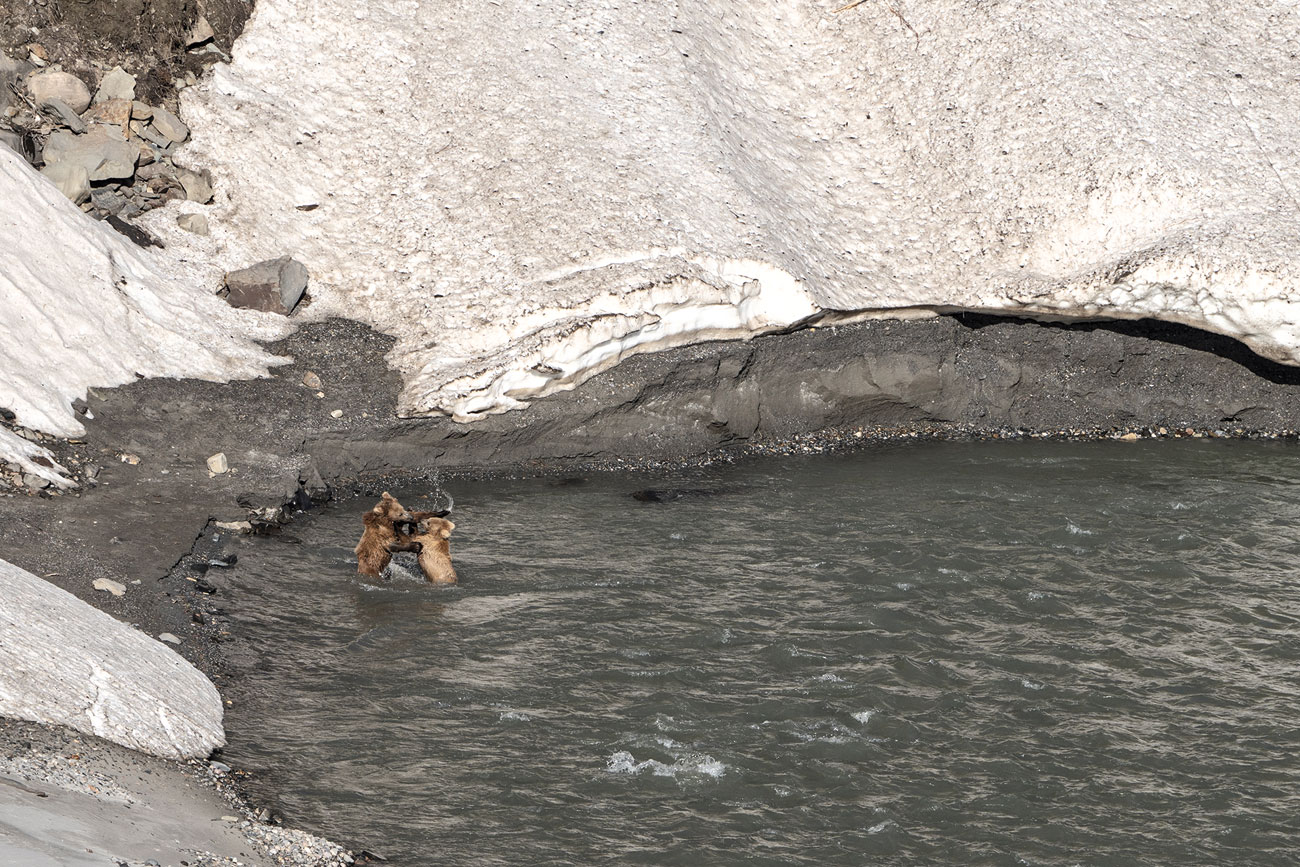
In April 2022, on account of heat waves in the region, these Himalayan brown bear cubs descended to the Chenab (Chandrabhaga) river and were seen frolicking in the waters. Photo: Shiv Kumar.
Under the UNDP SECURE Himalaya project, we have tested Fox lights and ANIDERs (Animal Intrusion Detection and Repellent Systems) with a few farmers on a pilot basis in the Tindi valley of Lahaul. Now we plan to install these devices in various parts of the valley, where the occurrences of crop-raiding are more frequent.
Looming Threats
The Chandrabhaga (Chenab) is the main waterbody in Lahaul, and there are a dozen hydroelectric projects proposed in the Lahaul-Pangi area. The construction of these projects will force these large mammals to leave their natural habitat, leading to a definite increase in human-animal conflicts in the region. After the opening of the Atal Rohtang Tunnel, the number of tourists as well as motor vehicles in the valley has already increased.
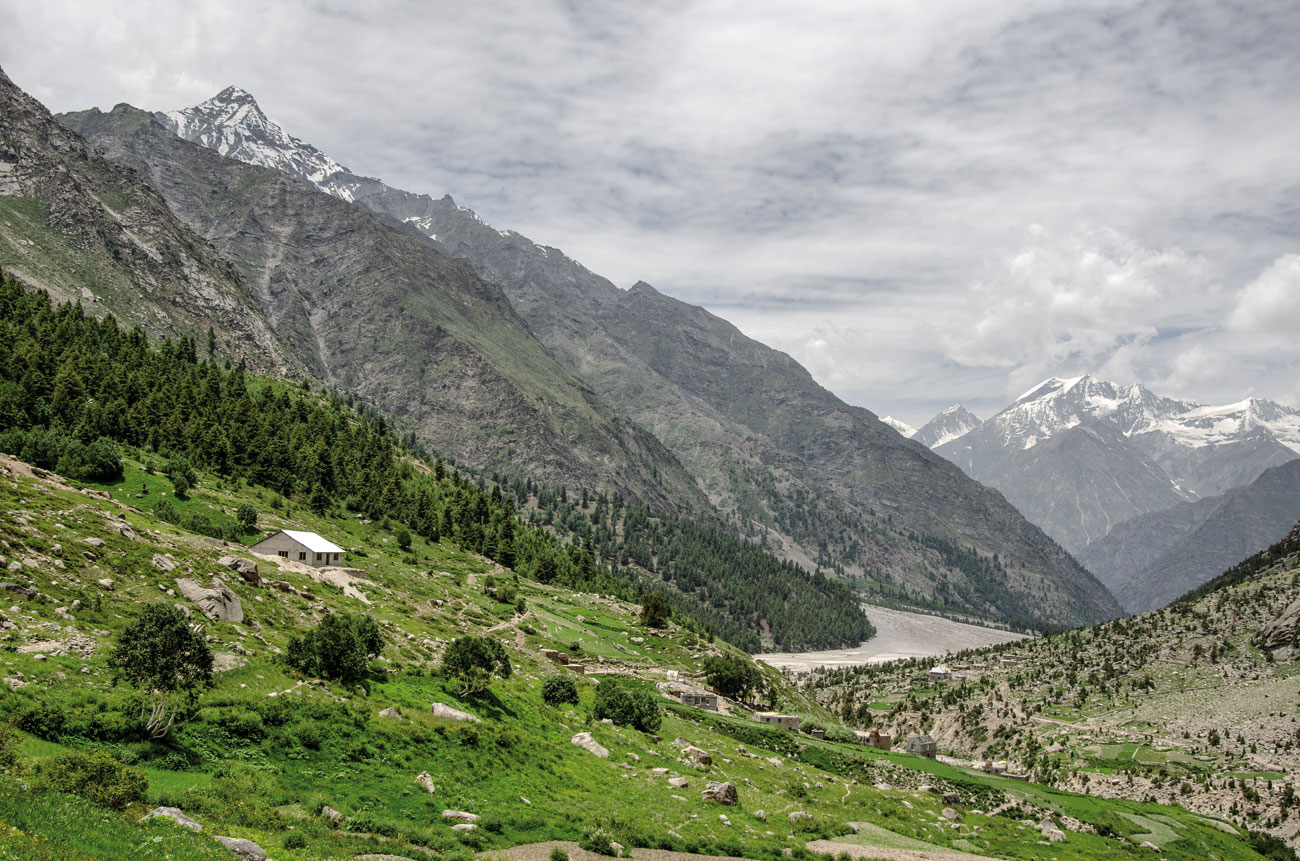
The disruption in the hibernation cycle of the Himalayan brown bear is just one of the many ways in which climate change is affecting the ecosystem in the region, leading to unintended consequences for both the bears and humans. In the Miyar valley, conflict with shepherds who migrate to this region every year with their livestock, is bound to increase. Photo: Shiv Kumar.
The disruption in the hibernation cycle of the Himalayan brown bear is just one of the many ways in which climate change is affecting the ecosystem in the region, leading to unintended consequences for both the bears and the humans that share their habitat. It is essential that we take steps to mitigate the effects of climate change to ensure the survival of these majestic animals, and the prosperity of the communities that share their home.
Shiv Kumar, Deputy Forest Ranger, Lahaul Forest Division, Himachal Pradesh, is a wildlife enthusiast and avid birder who has worked extensively on human-wildlife conflict mitigation and snow leopard conservation. He is an alumni of Sanctuary Nature Foundation’s Mud on Boots project 2019-2020 and India Biodiversity Awardee 2021. His niece, 18-year-old Akanksha Thakur’s interests extend far beyond the engineering degree she is currently pursuing as she hopes to work in conservation efforts for the region’s wildlife and is determined to make a difference.







